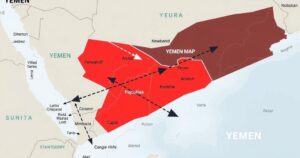Lessons Learned from the Recent Caribbean Earthquake

On February 8, a 7.6 magnitude earthquake struck the Caribbean Sea, causing no injuries or severe damage. This event represents an opportunity to learn about earthquake preparedness as it occurred at a safe distance from populated areas. It emphasizes that significant earthquakes can occur outside the Pacific region and reveals the need for clearer communication in tsunami warning systems.
On February 8, a magnitude 7.6 earthquake struck the Caribbean Sea, yet thankfully caused no injuries or significant damage. This event serves as a considerable opportunity for learning, demonstrating that significant earthquakes can occur outside the Pacific region. The earthquake was located at a distance of 130 miles from the Cayman Islands and 360 miles from Cancun, making it less impactful due to its remote location.
The Caribbean is often overlooked when discussing seismic activity, despite its history of substantial earthquakes. Unlike the more seismically active Pacific, the Atlantic region has notable exceptions, including the Scotia Sea and the Caribbean itself. The Caribbean region has a history of over 220 recorded earthquakes of magnitude 6 or greater in the last 75 years, with the largest recorded being a 7.8 in 1946.
Of particular significance is the 2010 Haiti earthquake, which resulted in around 160,000 deaths due to a combination of similar seismic intensity and weak infrastructure. Since then, there have been numerous significant earthquakes, including a 7.2 magnitude quake in 2021 and a 7.7 quake off Cuba in 2020. The recent event occurs along the same plate boundary, reiterating the seismic potential of the Caribbean.
The tsunami warning system, however, proved complex during the February 8 event, with multiple bulletins issued rapidly following the quake. The first alert was released seven minutes after the earthquake, forecasting potential threats across the Caribbean and adjacent areas. Notably, U.S. authorities do not have the jurisdiction to issue warnings to foreign nations.
In the face of these challenges, the system did satisfactorily test its protocols, ultimately resulting in the confirmation of only minor tsunami activity. This indicates that there is significant room for improvement in the clarity and communications of tsunami alerts, especially for new emergency responders.
The recent earthquake illustrates both the risks associated with seismic activity beyond the Pacific and the importance of honing our emergency response capabilities through lessons learned from such events. This incident reinforces the necessity for ongoing improvement in earthquake and tsunami preparedness systems.
The February 8 earthquake in the Caribbean, despite being a significant magnitude, fortunately resulted in no injuries and minimal damage. It presents a valuable learning opportunity regarding earthquake preparedness, highlighting the need to enhance the tsunami warning system’s clarity due to its complexity. The event serves as a reminder that significant seismic activity occurs outside the Pacific, underscoring the necessity for ongoing improvements in disaster management protocols.
Original Source: www.times-standard.com








